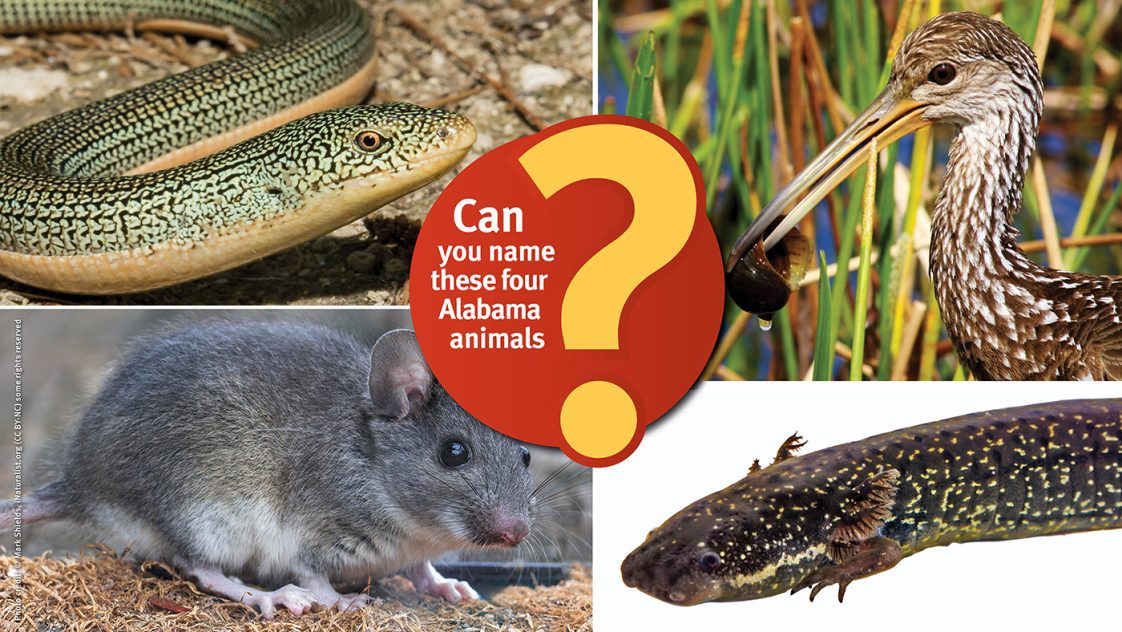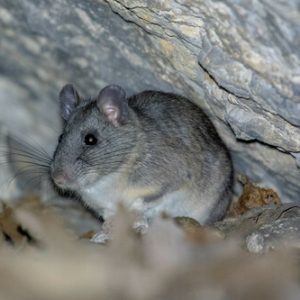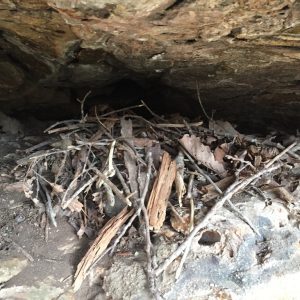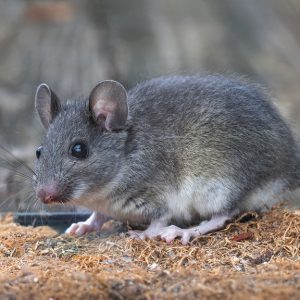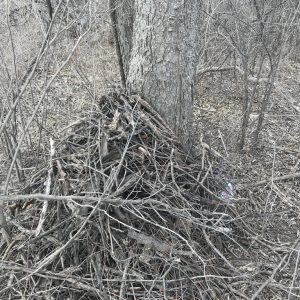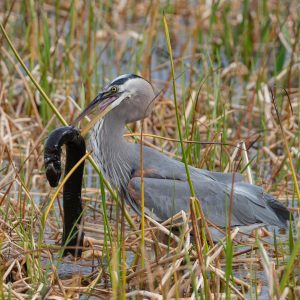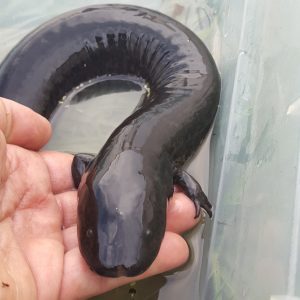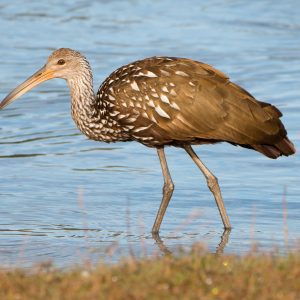Forestry & Wildlife

AUBURN UNIVERSITY, Ala. — Imagine seeing a lizard with no legs or a giant salamander that can go years without eating. No, this isn’t an April Fools’ Day joke. These creatures are real. While they can’t confirm sightings of Bigfoot or the Loch Ness Monster, wildlife professionals with the Alabama Cooperative Extension System can attest to the existence of these and some other downright strange creatures.
Wesley Anderson, an Alabama Extension wildlife specialist, said Alabama is home to more species than anywhere else east of the Mississippi River.
“With Alabama’s varied landscapes and abundant waterways, there’s a lot to take in,” Anderson said. “Considering the state’s biodiversity, it shouldn’t come as a surprise that some pretty cool, and sometimes strange, creatures abound. Some might jar you awake in the middle of the night with their piercing wails. Others, you might never know existed unless you went searching for them in the swamp.”
Glass Lizards: When a “Snake” is not a Snake
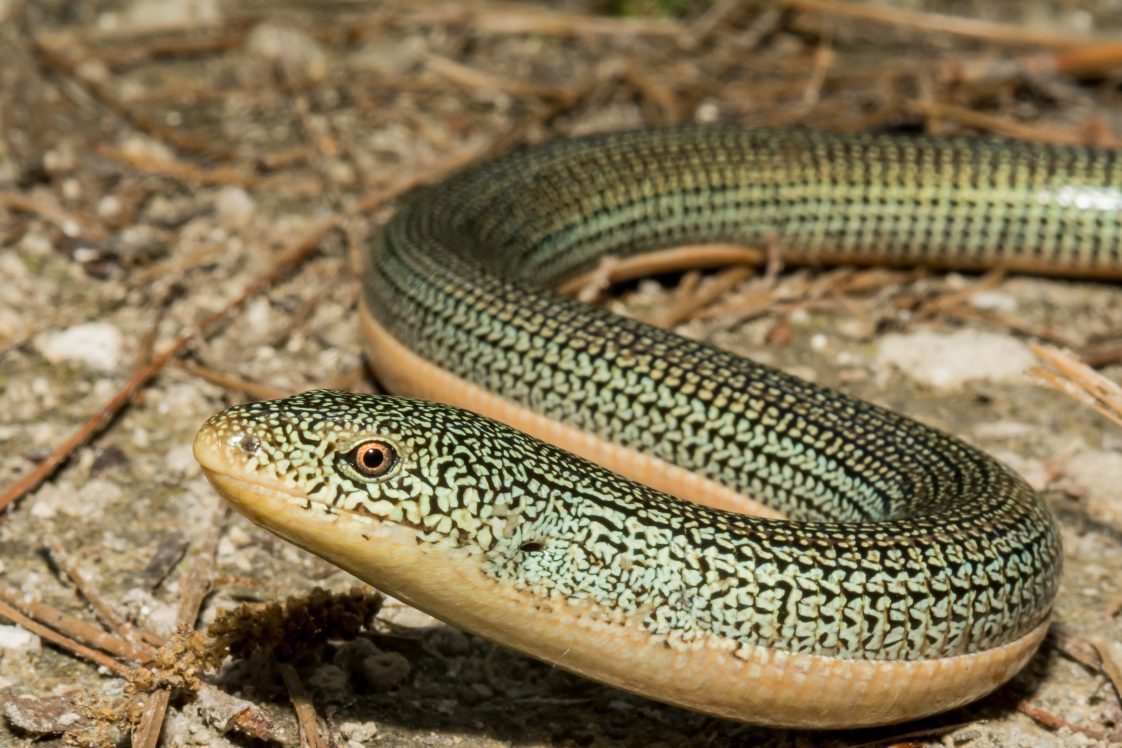
Eastern Glass Lizard
Back to this lizard with no legs. That is exactly what the glass lizard is. There are three species of this reptile found in Alabama: the eastern, mimic and slender. The mimic and slender glass lizards are of high conservation concerns and protected by the State.
If glass lizards do not have legs, wouldn’t that make them a snake? While they may look like snakes, Anderson said there are some big differences between the two.
“The glass lizard is Alabama’s only legless lizard,” Anderson said. “Unlike snakes, they have eyelids and external ear openings. Also, unlike snakes — where most of their length is their body — most of the length of glass lizards is, in fact, their tail. So, they aren’t snakes, and as lizards go, they aren’t closely related to snakes.”
As if the whole no-leg thing wasn’t odd enough, glass lizards’ tails can fall off. While many lizards can do this, Anderson said glass lizards take it to the extreme.
“Their tail will often break into multiple pieces, hence the name glass lizard, and they do it very readily,” Anderson said. “Some folks think that they can put themselves back together, which isn’t true, but they can regrow their tails.”
Woodrats: The Original Pack Rat
Woodrats are mostly herbivorous rodents, but they aren’t your average rat. Two species live in the state: the Allegheny and eastern. Allegheny woodrats can grow to about the size of the eastern gray squirrel.
You can consider woodrats to be somewhat of citizen scientists. The nests they build — known as middens — are mainly made up of vegetative-like twigs and sticks. However, they will also collect anything that catches their interest, particularly shiny objects. This is where the term “pack rat” comes from. Because of this, these middens can contain elements that help scientists better understand how vegetation and the environment changes over time.
-
Allegheny Woodrat
Photo credit: © Amiel Hopkins, iNaturalist.org (CC BY-NC) some rights reserved
-
Allegheny Woodrat Midden
Photo credit: © Ryne Rutherford, iNaturalist.org (CC BY-NC) some rights reserved
-
Eastern Woodrat
Photo credit: © Mark Shields, iNaturalist.org (CC BY-NC) some rights reserved
-
Eastern Woodrat Midden
Photo credit: © Ryan Donnelly, iNaturalist.org (CC BY-NC) some rights reserved
Sirens: When Two Legs Aren’t Normal
Greek mythology is filled with stories of sirens, which were creatures that lured sailors to their deaths with their melodious voices. While they may not be luring sailors in anytime soon, the sirens that live in Alabama do have melodious voices all their own.
Sirens are large aquatic salamanders that resemble eels. According to Anderson, sirens are one of the few salamanders that can vocalize. Until 2018, there were only three species of sirens described by scientists. Now, there are five species, and Alabama is the only place in the world where people can find all five. Some species can grow to more than 3 feet in length. The greater siren species can make a yelping sound, and the lesser siren species can make a clicking sound.
“Sirens are paedomorphic, which means they retain larval characteristics through adulthood,” Anderson said. “In this case, they have large, bushy external gills that they keep their entire lives.”
Sirens are not closely related to any other salamanders. For starters, they only have forelimbs. They also are the only salamander that eats plants. All other salamanders are strict carnivores.
“They can live an incredibly long time without food,” Anderson said. “One siren was recorded going over five years without any food.”
- A great blue heron eating a greater siren.
- Greater Siren
- Limpkin
Limpkins: A New Wail in Alabama
One of the state’s noisiest neighbors, the limpkin is an awkward, gangly bird that is generally found throughout the tropics. In recent years, they have slowly made their way up the Florida peninsula. However, according to Anderson, there was a historic number of limpkins in Alabama in 2023.
“Limpkins are mollusk specialists, particularly of apple snails,” Anderson said. “We do have a native apple snail in south Alabama as well as an invasive species that has established in the Mobile–Tensaw River Delta. If that invasive species becomes further established, it will undoubtedly increase limpkin numbers in the state.”
If you are trying to enjoy a quite time at home, a male limpkin is not the best bird to have around. The males make loud, piercing screeches and wails. They also make a rattling call when disturbed or courting a female.
More Information
These four creatures are just a few examples of Alabama’s incredible wildlife. To learn about other creatures in the state, visit the Alabama Extension website at www.aces.edu. The Alabama Department of Conservation and Natural Resources is also a great resource for information at www.outdooralabama.com.

